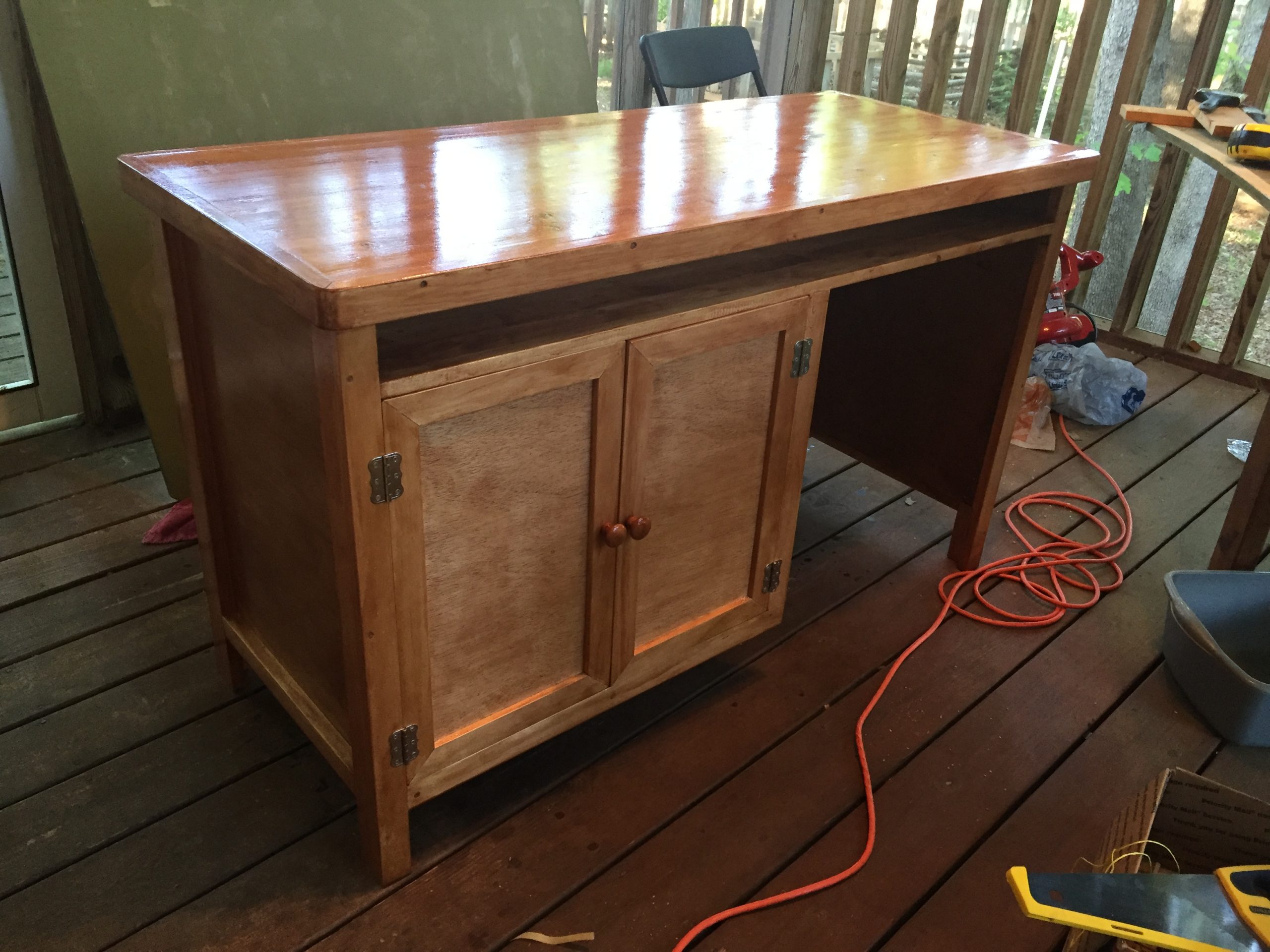More about Working with Wood
Some time back, I shared some thoughts about working with wood (HERE and HERE). Time spent away from my desk is spent profitably and enjoyably harnessing some God-given resources and converting them into useful items. Three projects come to mind:
Doubling up on Desk Space
Part of being productive involves having an environment in which it is possible to spread out somewhat. A single desk seems too cramping, so I dreamed up a design that would accommodate some ugly plastic shelving that needed concealing and that would also give me some significant extra space for working. Home Depot sells lumber at a reasonable cost, so off I went to find out what I could use. Initially I thought plywood (carefully edged) would be sufficient, but I discovered pine strips bonded together into an attractive board, so I settled on that. After a few weeks of measuring, cutting, joining, sanding, and varnishing, I was pleased with the outcome.
The Problem with Books
The problem with books is that they need decent accommodation. Sue and I have been blessed with gifts of several beautiful volumes and we have purchased others in light of ongoing study and being kept appraised. Two of our friends, an elderly couple, are amused that I had to inform them that their generosity caused me to build another pine bookshelf named in their honor!
Sagging Encyclopedia Shelves
The third item proved a more challenging one for me to construct. After we were married, Sue and I purchased (in part as an anniversary gift and as a kind of memorial of my paternal grandmother) a set of Encyclopedia Britannica. It came with a pretty standard set of shelves, and these did not take long to start to sag.
I have long loved the appearance of cedar (and related woods in its family). Strictly speaking, cedar is a Middle-Eastern tree, but there are variants, some of which grow in South America. Home Depot had some from Colombia. After researching some cutting and finishing techniques online, I took the plunge and purchased a couple of small pieces to see what they handled like. I was surprised by the softness of the wood and its responsiveness to being glued and screwed. A week later, I went back and purchased several pieces with a view to constructing a bookcase for the set encyclopedias that proved a visual annoyance to me each time I noticed how their shelves sagged.
Although some of the pieces of cedar appeared a little twisted, when I glued and screwed them into a frame, they straightened and stayed that way. That was pleasing. And all the time, there was the fragrance of cedar on our back deck where I was working. It was challenging to make relatively invisible joins that would still keep the piece strong (Encyclopedia Britannica sets are about as heavyweight as they come), but the resultant bookcase is pretty pleasing to look at, even if I did not apply as much linseed oil as I might have done to get the tones and grains a little darker.


